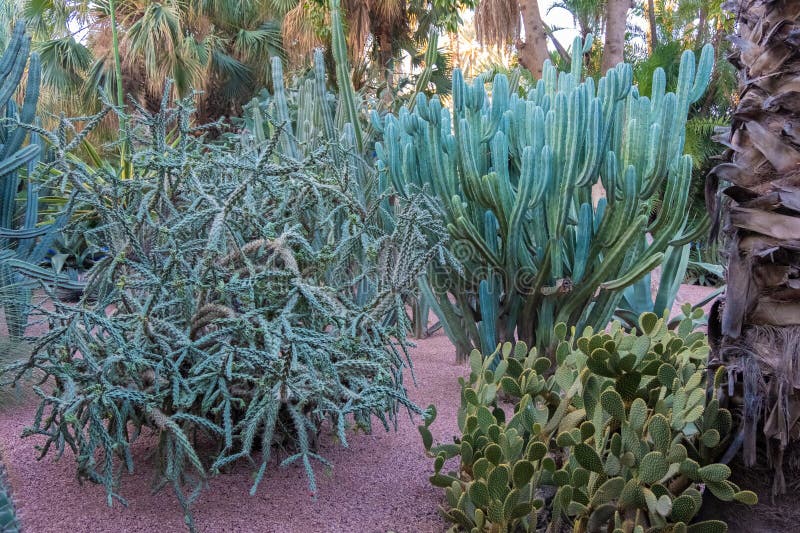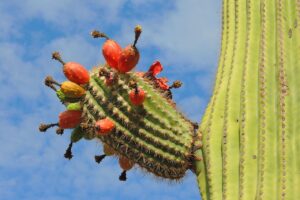When one envisions the arid landscapes of deserts, vibrant yellow blooms blossoming amidst the rugged terrain paint a scene of resplendent tenacity. Within the realm of cacti, a select assortment flourishes to offer a brilliant kaleidoscope of yellow flowers that not only captivate the eye but also symbolize resilience and vitality. This article delves into some of the most remarkable cactus varieties that display stunning yellow flowers, eliciting both admiration and curiosity.
In the natural world, yellow often signifies joy and innovation, traits that these captivating cacti embody. As we explore this unique subset of succulents, we will unveil the botanical wonders that thrive under the relentless sun, showcasing their rare beauty and indispensable charm.
Bright Flowers and Compelling Formations: The Unmatched Appeal of Yellow-Flowering Cacti
Among the myriad of cactus species, those adorned with yellow blooms stand out not only for their aesthetic appeal but also for their distinct growth patterns. Let’s delve into several celebrated varieties that exemplify this splendid attribute.
The Golden Barrel Cactus (Echinocactus grusonii) is an iconic specimen frequently found gracing gardens far beyond its native Mexican home. Characterized by its spherical form and vibrant golden spines, this cactus can reach substantial dimensions. In spring, mesmerizing yellow flowers emerge, resembling sun-kissed orbs taking flight. These blossoms burst from the crown of the cactus, transforming the robust plant into a floral centerpiece that exudes warmth and positivity.
The Fishhook Barrel Cactus (Ferocactus wislizeni) is another fantastic contender, often associated with arid southwestern landscapes. Its dramatic appearance showcases a cylindrical structure laced with fierce spines that gives way to stunning trumpet-shaped yellow flowers. These blossoms radiate from the top of the plant, resembling golden crowns. The Fishhook Barrel thrives under intense sunlight, flourishing just like an artist that draws inspiration from the saturating hues of a sun-drenched canvas, contributing vibrant bursts to rocky terrains.
Additionally, the Lophocereus schottii, more colloquially known as the Organ Pipe Cactus, presents an intriguing variation. This unique cactus displays elongated, column-like arms that extend upwards, creating a charming visual reminiscent of a synesthetic melody. In late spring and early summer, the Organ Pipe Cactus showcases delicately fragrant yellow flowers that unfurl like dancers under the spotlight, inviting pollinators and gardening enthusiasts alike. The juxtaposition of its statuesque shape with ephemeral blooms forms a poetic harmony in any desert garden.
Transformational Monsters of the Desert: Notable Traits and Care
While the beauty of yellow-blooming cacti is undeniable, understanding their distinctive traits, habitat preferences, and care requirements provides insight into their successful cultivation. These miraculous plants have adapted wonderfully to arid conditions, thriving in sandy soils with excellent drainage. Their spiny exterior cleverly protects them from herbivores while retaining invaluable moisture within their thickened tissues.
Sun exposure remains critical in ensuring healthy growth. Cacti with yellow flowers typically flourish in full sun, lightening up the environment as they absorb the life-giving energy of the sun. When grown in overly shaded conditions, the results can be detrimental: weak, spindly stems and a lack of blooming vigor. Observing proper watering techniques is essential, as overwatering can lead to root rot and dampen the journey towards exuberant blooms.
When contemplating the addition of yellow-flowering cacti to one’s garden, one must recognize the cyclical nature of bloom cycles. Each species has its specific period for flowering, which can vary based on environmental factors such as temperature. Consequently, observing seasonal shifts, and understanding the biology of these plants, enhances the anticipation of their enchanting displays.
Beyond Aesthetics: Ecological Significance and Cultural Tie-Ins
Yellow-blooming cacti hold more than mere ornamental value. Their bright flowers serve a crucial ecological function, attracting pollinators such as bees, hummingbirds, and butterflies, which play an essential role in maintaining biodiversity in their ecosystems. This mutualistic relationship illustrates nature’s intricate web of connections, binding together plants and their pollinators in a beautiful dance of survival.
Culturally, cacti laden with yellow flowers resonate deeply within various indigenous cultures. The symbolism surrounding these plants often relates to prosperity, warmth, and the sun, themes that are prevalent in many mythologies. Such plants play a starring role in rituals and folkloric tales, rendering them more than just botanical specimens but conduits of stories steeped in tradition and connection.
Conclusion: Nurturing Nature’s Golden Blooms
Whether serving as vibrant accents in an arid garden or symbolizing larger concepts of resilience and joy, cacti adorned with yellow blooms possess an extraordinary allure. As they stand resilient amidst challenging conditions, they remind us of nature’s force and artistry. In cultivating these remarkable plants, we embrace their unique beauty while fostering ecological harmony. Much like the sun that nurtures life, the incorporation of yellow-blooming cacti heralds hope, creativity, and beauty in our everyday landscapes, illuminating the simplicity and elegance of thriving in adversity.





Leave a Comment